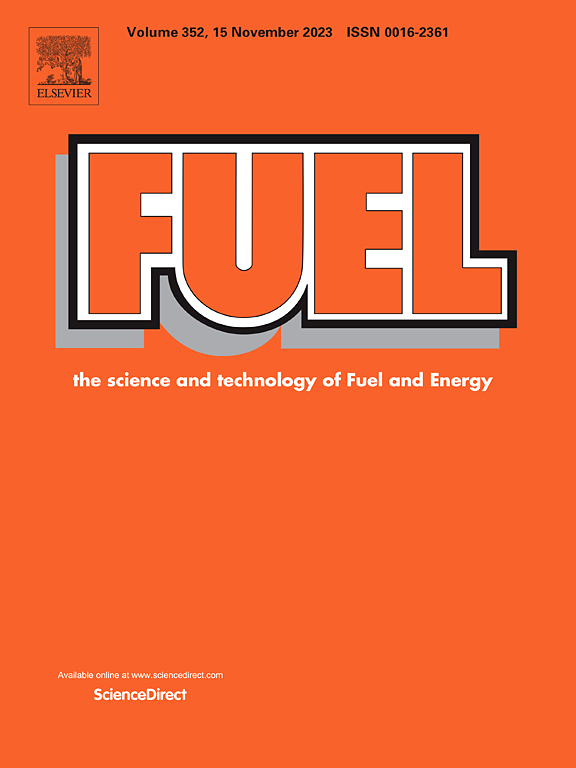Green synthesis of highly efficient and stable Ni@CQD nanoparticles: Experimental and theoretical approach for hydrogen production from dimethyl aminborane and sodium borohydride hydrolysis
IF 6.7
1区 工程技术
Q2 ENERGY & FUELS
引用次数: 0
Abstract
In this study, four different catalysts (Ni(0), Ni@Urea, Ni@DOT, Ni@MOF-DOT) were synthesized. The first two of these were synthesized by the impregnation method, while the last two were obtained using the hydrothermal method. Hydrogen (H2) efficiency of catalyses were investigated by hydrolysing sodium borohydride (SBH) and dimethylamine borane (DMAB) hydrogen sources. The HGR values obtained for SBH and DMAB hydrolysis of the best catalysis Ni@MOF-DOT were determined to be 1423 and 642 (mL/min.g.cat), and the TOF values were determined to be 191/hour and 78.6/hour, respectively. Transmission Electron Microscopy (TEM), Energy-dispersive X-ray spectroscopy (EDS), nitrogen adsorption/desorption, X-ray diffraction (XRD), Fourier transform infrared spectroscopy (FTIR), Inductively coupled plasma optical emission spectroscopy (ICP-OES) and X-ray photoelectron spectroscopy (XPS) analyses were used for the characterization study of Ni@CQDs nano-catalyst. In kinetic analyses driven by Arrhenius and Eyring-Polanyi equations, the catalyst in the hydrolysing of DMAB has lower activation parameters while the catalysts have showed stability over six reusability cycles in both hydrogen sources. Also, the average particle size of the (Ni@DOT-MOF) nano catalyst is about 4.6 nm and the presence of Carbon (C), oxygen (O), nitrogen (N) and Ni (Ni) atoms in its structure is confirmed by XPS and ICP analyses. The high density of 2P1/2 and 2P3/2 spin states of Ni atoms in the Ni@MOF-DOT catalyst creates Lewis acid regions that increase the catalytic activity. The experimental results were supported by Molecular Dynamics (MD) findings based on extended tight-binding density functional theory (GFN1-xTB).
求助全文
约1分钟内获得全文
求助全文
来源期刊

Fuel
工程技术-工程:化工
CiteScore
12.80
自引率
20.30%
发文量
3506
审稿时长
64 days
期刊介绍:
The exploration of energy sources remains a critical matter of study. For the past nine decades, fuel has consistently held the forefront in primary research efforts within the field of energy science. This area of investigation encompasses a wide range of subjects, with a particular emphasis on emerging concerns like environmental factors and pollution.
 求助内容:
求助内容: 应助结果提醒方式:
应助结果提醒方式:


